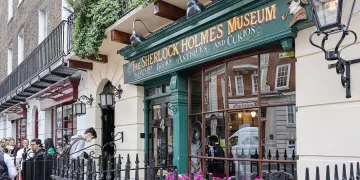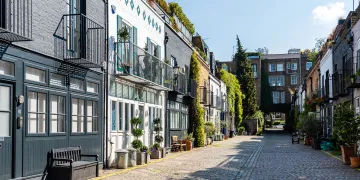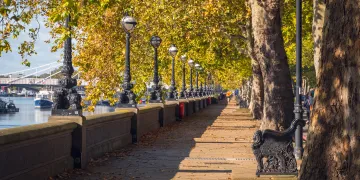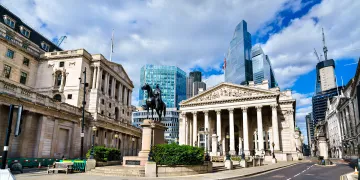London stands as a backdrop to numerous classic films and novels, its landmarks and streets weaving through narratives that have captivated audiences worldwide. Below is our collection of some of the most iconic film and literature locations that highlight the city in all its glory.
221B Baker Street
The legendary address of 221B Baker Street is synonymous with Sir Arthur Conan Doyle's Sherlock Holmes, the quintessential detective whose stories have enthralled readers for generations. While 221B is not a real address, Baker Street very much embodies the intrigue and intellect of London's literary scene. Today, visitors can immerse themselves in the world of Holmes and Watson at the Sherlock Holmes Museum, a testament to the enduring legacy of Doyle's work and the city's influence on his storytelling.

Notting Hill
The charming district of Notting Hill, with its vibrant markets and colourful houses, became globally recognized through Richard Cutis’s eponymous romantic comedy starring Julia Roberts and Hugh Grant. The British classic effortlessly showcases the area's unique blend of urban vitality and romantic allure, capturing the essence of London's diverse character. Notting Hill remains a pilgrimage site for film lovers, eager to walk in the footsteps of its beloved characters.

Chelsea Embankment
This picturesque promenade along the Thames is vividly brought to life in Charles Dickens' "Our Mutual Friend." Set against the backdrop of the Thames, Dickens’s ability to weave a complex narrative through a rich social analysis tapestry is matched only by his authentic portrayal of the riverbank and the surrounding areas. Today, Chelsea Embankment stands as a testament to the neighbourhood’s allure, marrying the area's historical charm with the literary genius of Dickens.

Tower Bridge
Tower Bridge, as iconic a symbol of London as Big Ben or the London Eye, plays a crucial role in the classic British comedy "The Lavender Hill Mob”, starring Alec Guinness. The film is known for its memorable heist scene on the bridge with the architectural marvels of 50’s London set in the background. Noted and popular in its own right, Tower Bridge continues to draw visitors for its historical and architectural significance as well as its role as a landmark in British film history.
The Royal Exchange and Cherry Tree Lane
60’s London serves as the playground for the adventures of a magical nanny who brings joy and wonder into the Banks’ lives in the British classic and family favourite "Mary Poppins". The Royal Exchange, formerly London’s financial hub, features prominently as the workplace of Mr. Banks.
The Banks family lives at 17 Cherry Tree Lane in London. Unfortunately, though, Cherry Tree Lane does not exist… but there are certainly roads like it in and around Chelsea and Kensington. The famous rows of the Georgian and Victorian houses that line the roads of the borough acted as inspiration for author P.L. Travers as she was writing the Mary Poppins series while living at 50 Smith Street, Chelsea. Her English Heritage blue plaque can be found at this address, 15 minutes from the Chelsea Barracks estate.

The British Museum
The British Museum is home to centuries of history and culture but it plays a significant role in The Thirty-Nine Steps by John Buchan. One of the finest espionage novels of the 20th Century, the protagonist Richard Hannay finds sanctuary in the museum’s expansive corridors and exhibitions as he attempts to elude his relentless pursuers. With its majestic presence and intricate architecture, the museum is a compelling backdrop for the ongoing suspense of John Buchan’s novel and captures his fondness of London's most iconic landmarks.

These locations offer more than just a physical setting. Instead, they are integral to the stories that unfold within their confines and truly highlight London as one of the most vibrant, diverse and culturally significant cities in the world. The films and novels each invite visitors to explore London through a lens that transcends the ordinary, uncovering the layers of history, imagination and creativity that have defined the city for centuries.


